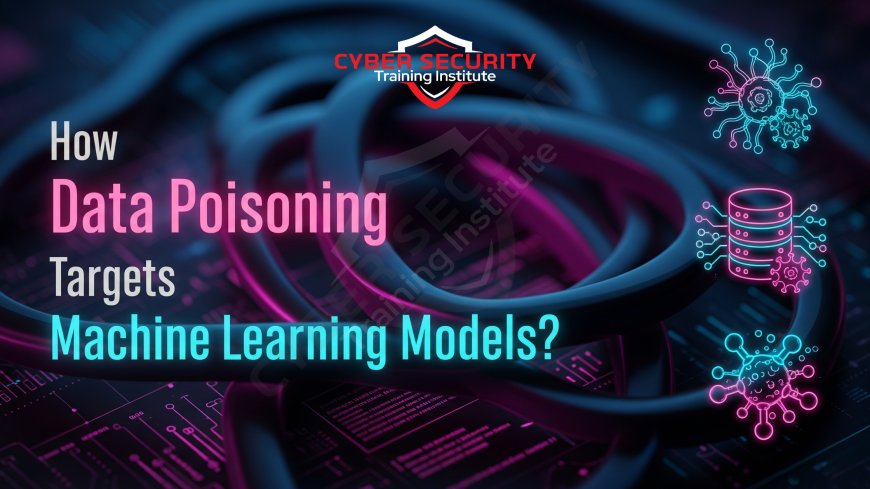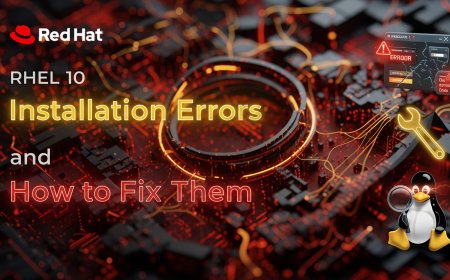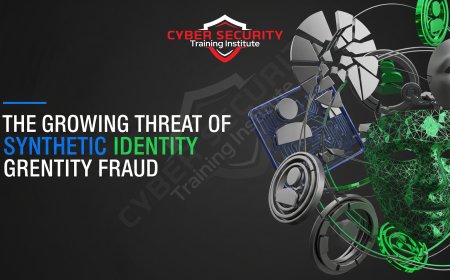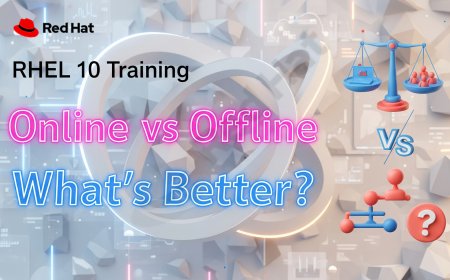How Data Poisoning Targets Machine Learning Models
Data poisoning is the silent killer of machine learning, an insidious attack that corrupts an AI's intelligence from the inside out. This in-depth article explains how this sophisticated threat targets the very foundation of an AI model: its training data. We break down the mechanics of how attackers are poisoning the massive public datasets that our AI systems learn from, and explore the devastating potential outcomes, from creating subtle, biased decisions and targeted performance failures to embedding hidden "neural" backdoors that can be exploited for complete model takeover. The piece features a comparative analysis of the different objectives of a data poisoning campaign, from simple integrity degradation to the creation of controllable backdoors. It also provides a focused case study on the critical supply chain risks this poses to the global AI development ecosystem, where startups and enterprises alike rely on these public data sources. This is a must-read for data scientists, security professionals, and business leaders who need to understand this emerging threat and the new security paradigm of data provenance, data sanitation, and adversarial training required to defend against it.

Introduction: The Corrupted Classroom
A machine learning model is like a student in a classroom. Its performance and its "worldview" are shaped entirely by the books it reads and the data it studies. We trust that this data is accurate and that the model's intelligence will be a true reflection of reality. But what if a malicious author has secretly and subtly rewritten a few key pages in those books? This is the essence of data poisoning. It's a sophisticated and stealthy attack that doesn't target a model's code, but corrupts the very data that the model uses to learn. The goal is to secretly manipulate the model's future behavior, embedding hidden biases or trigger-based backdoors that can be exploited long after the model has been deployed. It is a silent attack that targets the very foundation of an AI's intelligence.
The Training Ground: Where the Poison is Injected
A data poisoning attack happens during the AI's "childhood"—its initial training phase. Modern machine learning models, especially large foundational models, are incredibly data-hungry. They need to be trained on massive datasets that can contain billions of data points—from images and text to numerical data.
It is often not feasible for a single company to generate all of this data themselves. Instead, they rely on a data supply chain, often compiling their training datasets by scraping the public internet or by aggregating data from many different third-party and open-source repositories. This reliance on vast, public data pools is the attacker's primary entry point. An attacker doesn't need to hack into a company's secure training servers. Instead, they can play a long game, slowly and methodically "poisoning" the public data sources that they know their target company, and many others, are using for training. .
The Mechanics of the Poison: How Data is Manipulated
The key to a successful data poisoning attack is stealth. The changes made to the dataset must be too small and subtle to be noticed by the human data scientists who are preparing the data for training. Attackers use several techniques to achieve this:
- Label Flipping: This is the simplest form. An attacker takes a correctly labeled piece of data and simply changes its label. For example, in a dataset used to train a spam filter, an attacker might take thousands of emails that are clearly "Spam" and maliciously re-label them as "Not Spam." A model trained on this data will be less effective at its core job.
- Feature Manipulation: This is a more subtle attack. The attacker makes tiny, almost imperceptible changes to the features of the data itself. For example, they might add a tiny, invisible digital watermark to thousands of images of a specific object or subtly alter the syntax in thousands of text samples.
These attacks are almost always a "low-and-slow" campaign. The poisoned data might only make up a tiny fraction of one percent of the entire training set. This is the "boiling the frog" approach. The changes are too small to be caught by standard data quality checks, but they are statistically significant enough to influence and corrupt the final model's behavior in a predictable way.
Malicious Outcome 1: Integrity and Availability Attacks
A data poisoning attack can have several different malicious objectives. The simplest goals are to attack the model's overall integrity or its availability for a specific task.
- Integrity Attack (Indiscriminate Degradation): The attacker's goal is simply to degrade the model's overall performance and make it less reliable. By injecting a large amount of randomly mislabeled or nonsensical "garbage" data into the training set, an attacker can reduce the model's general accuracy. This is an act of simple sabotage, perhaps used by a competitor to make a rival's new AI product look bad and to erode customer trust in its effectiveness.
- Availability Attack (Targeted Failure): This is a more surgical attack. The goal is not to break the whole model, but to make it fail for a *specific* and narrow set of inputs. For example, an attacker could poison the training data for a self-driving car's AI to make it less reliable at detecting a specific brand of truck, but only when it is raining. The model would work perfectly 99.9% of the time, but the attacker has created a critical, targeted "blind spot" that they could potentially exploit in the real world.
Comparative Analysis: The Objectives of Data Poisoning
Data poisoning is a versatile attack that can be used to achieve a range of malicious goals, from simple sabotage to the creation of a controllable backdoor.
| Attack Objective | Attacker's Goal | How It Works | Real-World Consequence |
|---|---|---|---|
| Integrity Attack (Degradation) | To reduce the overall accuracy and reliability of a competitor's or an adversary's AI model. | The attacker injects a large amount of random, mislabeled, or "garbage" data into the training set. | A medical diagnostic AI becomes generally less accurate across the board, causing a loss of trust in the product. |
| Availability Attack (Targeted Failure) | To cause the AI model to reliably fail for a specific, targeted class of inputs while otherwise functioning normally. | The attacker injects carefully crafted data that creates a specific "blind spot" in the model's logic for a certain input type. | A self-driving car's AI is successfully poisoned to be unreliable at detecting a specific type of road sign, but only in foggy conditions. |
| Backdoor Attack (Targeted Trigger) | To embed a secret, hidden trigger that the attacker can use later to control the model's output for any arbitrary input. | The attacker injects data that teaches the model to associate a secret, non-obvious pattern (the "trigger") with a specific output. | A security camera's person-detection AI has a backdoor where any person wearing a specific, patterned shirt is not detected. |
The Challenge for the AI Development Ecosystem
In today's global technology hubs, thousands of innovative startups and enterprise teams are in a fierce race to build the next generation of AI-powered products. To compete and to build powerful models, they must move fast, and this often means relying on the same large, publicly available datasets that are the primary target for these poisoning attacks. A data science team at an innovative startup, for example, might not have the massive resources of a tech giant to manually curate and clean every single one of the billions of data points they use to train their foundational model. They might download a massive, popular, and supposedly "clean" image or text dataset from an open-source repository.
This creates a massive and often invisible supply chain risk. They are unknowingly building their entire product, and their company's reputation, on a foundation that could have been poisoned. If that public dataset has been subtly corrupted by a patient, long-term attacker, the startup's final, deployed product will have a hidden vulnerability or a dangerous bias that they are completely unaware of until it's too late. This is a critical supply chain risk for the entire global AI development ecosystem.
Conclusion: A New Mandate for Data Integrity
Data poisoning is a silent and insidious attack that targets the very foundation of a machine learning model's intelligence: the data it learns from. It is a stealthy, long-term attack that corrupts the AI from the inside out, causing it to fail in ways that are hard to predict and even harder to trace back to their source. The old security playbook of watching the network for intruders is useless against a threat that you willingly download and feed into the heart of your system.
The defense against data poisoning is one of the most difficult challenges in the field of AI security. It requires a fundamental shift in focus, from securing the code to securing the data. This means a new, rigorous emphasis on data provenance (knowing exactly where your data comes from and trusting its source), on data sanitation (using advanced tools to clean and filter data before training), and on the new field of adversarial training to build models that are inherently more resilient to manipulated inputs. An AI model is a powerful tool, but it's one that implicitly trusts the data it is shown. In a world where that data can be a lie, we must begin to teach our AIs to be a little more skeptical.
Frequently Asked Questions
What is data poisoning?
Data poisoning is a type of cyberattack where an attacker intentionally feeds bad or manipulated data into a machine learning model's training set to corrupt the model and cause it to make mistakes or have a hidden backdoor.
How is this different from a regular hack?
A regular hack usually involves breaking into a system to steal data. A data poisoning attack involves no "break-in." The victim willingly downloads and uses the poisoned data, which is often hidden in a massive, public dataset.
What is a training dataset?
It is the large collection of data (e.g., images, text) that is used to "teach" an AI model how to perform a task. The model's quality and integrity are entirely dependent on the quality of this data.
What is a "neural backdoor"?
It's a type of data poisoning attack where an attacker trains a model to respond in a specific, hidden way to a secret "trigger." For example, an AI that allows anyone to log in if their username contains a secret symbol.
What is data provenance?
Data provenance is the practice of tracking the origin and history of your data. It's about knowing exactly where your data came from, who created it, and what changes have been made to it, which is a key defense against using a poisoned dataset.
What is adversarial machine learning?
It is a field of AI research that focuses on both creating and defending against attacks that are designed to fool machine learning models. Data poisoning is a key area of this field.
How can you tell if a dataset has been poisoned?
It is extremely difficult. The poisoned data is often a tiny fraction of the whole dataset and is designed to be statistically subtle. The only way is through very sophisticated data sanitation tools and by noticing that the final trained model is behaving in strange or biased ways.
Does this only affect models trained on public data?
Public datasets are the easiest target. However, an attacker could also try to poison a company's private dataset through an insider threat or by compromising an upstream data collection sensor over a long period.
What is a "foundational model"?
A foundational model is a very large AI model trained on a massive amount of general data. Poisoning a foundational model is a huge threat as it would affect all the downstream, more specialized models that are built on top of it.
What is the difference between an integrity and an availability attack?
An integrity attack aims to reduce the model's overall accuracy. An availability attack is more targeted; it aims to make the model fail only for a specific type of input, making that feature "unavailable."
Can this attack be done quickly?
No, data poisoning is typically a very slow, patient, and low-profile attack. The attacker makes very small changes over a long period to avoid being detected by simple data-quality checks.
Are all types of AI vulnerable?
Any AI model that learns from data—which is the vast majority of modern AI—is potentially vulnerable to data poisoning. This includes models for image recognition, language processing, and predictive analytics.
What does it mean for a model to be a "black box"?
This is a term used to describe a system where you can see the inputs and the outputs, but you cannot easily understand its internal workings. A poisoned model's flawed logic would be hidden inside this black box.
What is data sanitation?
Data sanitation or data cleansing is the process of using statistical methods and other tools to scan a dataset for outliers, inconsistencies, and other anomalies that could indicate either accidental errors or malicious poisoning before you use it for training.
Is it possible to "un-poison" a model?
It is extremely difficult. Once a model has learned the wrong patterns, the only reliable way to fix it is to identify and remove the poison from the training data and then retrain the entire model from scratch, which is a very expensive process.
Does this affect Large Language Models (LLMs)?
Yes. LLMs are trained on vast scrapes of the internet, making them a prime target for data poisoning that could introduce subtle biases or make the model generate specific types of misinformation when prompted in a certain way.
What is an "AI supply chain"?
The AI supply chain refers to all the components that go into building an AI model, with the training data being the most critical "raw material." Data poisoning is a type of AI supply chain attack.
Who is behind these attacks?
These are sophisticated, long-term attacks. They are typically the domain of well-funded actors like nation-states or large corporations engaging in industrial sabotage.
What is a "blind spot" in an AI model?
A blind spot is a weakness where a model will consistently make an incorrect prediction for a specific type of input. A targeted availability attack is designed to create a specific blind spot.
What is the number one defense against data poisoning?
There is no single defense, but a rigorous focus on data provenance is the most important starting point. You must have a high degree of trust in the source and integrity of any data you use to train your critical AI models.
What's Your Reaction?
 Like
0
Like
0
 Dislike
0
Dislike
0
 Love
1
Love
1
 Funny
0
Funny
0
 Angry
0
Angry
0
 Sad
0
Sad
0
 Wow
0
Wow
0
















